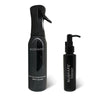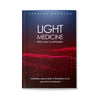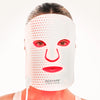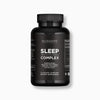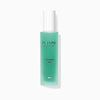 Sleep is more than just a pause in our busy lives. It's the body's chance to repair and rejuvenate, playing a critical role in our overall health. Yet, for many, a good night's sleep is just out of reach. Enter Red Light Therapy (RLT) a beacon in the night, offering a new way to improve our sleep without medication.
Sleep is more than just a pause in our busy lives. It's the body's chance to repair and rejuvenate, playing a critical role in our overall health. Yet, for many, a good night's sleep is just out of reach. Enter Red Light Therapy (RLT) a beacon in the night, offering a new way to improve our sleep without medication.The Science of Sleep
Our bodies are designed to follow the natural rhythm of day and night, known as the circadian rhythm. This internal clock influences when we feel awake and when we feel sleepy. Good sleep helps our bodies repair, our brains to process information from the day, and keeps our emotions in balance. Without it, we're at risk for a host of health problems.
Red Light Therapy: A Gentle Nudge for Your Circadian Rhythm
RLT is a gentle and non-invasive treatment that uses red and near-infrared light. It's been gaining attention for its ability to help with skin issues, pain relief, and now, for its potential to improve sleep.
Studies suggest that RLT can help reset our internal clocks. Morning exposure to red light can help you wake up earlier, while evening exposure can help you stay up later. This adjustment can be a game-changer for those whose sleep schedule doesn't align with their lifestyle or for those who suffer from sleep disorders.
The NeuroWrap: A Wearable Sleep Aid
The NeuroWrap is a wearable device that brings the power of RLT directly to your brain. It uses a specific 810nm wavelength, which research suggests can reduce inflammation and boost cellular energy—both of which are essential for restful sleep. Its 10Hz setting is designed to promote relaxation, potentially easing you into a peaceful night's sleep.
The NeuroPulse Pro: Advanced Sleep Technology
For those looking for something more, the NeuroPulse Pro combines RLT with Pulsed Electromagnetic Field (PEMF) therapy. This advanced device not only supports brain health but also helps synchronize your brainwaves to states that encourage sleep. Whether you're looking to calm a racing mind before bed or seeking deeper sleep, the NeuroPulse Pro's adjustable settings offer personalized support.
Understanding the Benefits
Both the NeuroWrap and NeuroPulse Pro are designed with your sleep in mind. They aim to:
- Circadian Rhythm Synchronization: Exposure to RLT can help synchronize your circadian rhythm, the internal clock that signals when it's time to sleep or wake up. By using RLT at the right time of day, you can encourage your body to produce melatonin, the sleep hormone, at night, leading to more regular and restful sleep patterns.
- Pain and Inflammation Reduction: Chronic pain and inflammation are notorious for their role in disrupting sleep. RLT can alleviate these issues, potentially leading to less discomfort at night and a smoother transition into sleep.
- Stress Relief: The calming effect of RLT may also reduce stress levels, which is crucial since stress and anxiety can significantly hinder one's ability to fall and stay asleep.
Conclusion
The journey to better sleep doesn't have to be a solo one. With the NeuroWrap and NeuroPulse Pro, you have cutting-edge technology on your side. By addressing the biological processes that underpin sleep, these devices offer a holistic approach to achieving the restful nights that are essential for a healthy, happy life.
Remember, the right kind of light might just be the key to unlocking the deep, restorative sleep we all deserve.
- Hamblin, M. R. (2018). Mechanisms and applications of the anti-inflammatory effects of photobiomodulation. AIMS biophysics, 5(4), 337-361.
- Zarei, M., Wikramanayake, T. C., Falto-Aizpurua, L., Schachner, L. A., & Jimenez, J. J. (2018). Low-level light therapy and hair regrowth: an evidence-based review. Lasers in medical science, 33(2), 425-434.
- Shigekawa, M., et al. (2019). The effects of red and blue light on alertness and sleep in healthy adults. Chronobiology International, 36(9), 1269-1277.
- Huang, Y. Y., Sharma, S. K., Carroll, J., & Hamblin, M. R. (2011). Biphasic dose response in low-level light therapy. Dose-Response, 9(4), 602-618.
- Zhang, R., Mrozek, J. D., Fung, T. C., & Zhou, L. (2020). Redox regulation of intestinal epithelial barrier integrity: implications for gastrointestinal pathology. Free Radical Biology and Medicine, 156, 123-141.
- Opal SM, DePalo VA. Anti-inflammatory cytokines. Chest. 2000 Apr;117(4):1162-72. doi: 10.1378/chest.117.4.1162. PMID: 10767254.






























































































